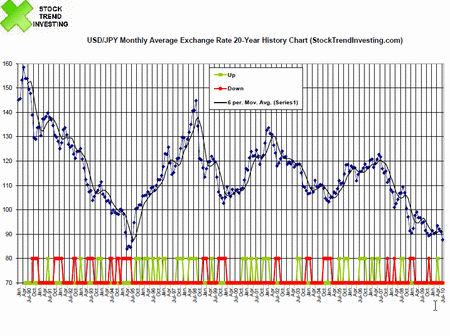

The private hospitals are costly, but they do save lives. The industrial products do help all, including farmers, lead happy lives. Look around and observe what goes on in and around any big factory.
The Second Industrial Revolution focused on steel production, railroad construction, and electricity. The basis of this revolution was a new factory-based economic and industrial model. These circumstances include the introduction of new technology and a rapid population rise.
From food to essential supplies, the population driven by industrialization can get the basic amenities faster. Also, as supplies go up, the prices ultimately get reduced. This results in enhanced quality of life as the products required are affordable to everyone. Low wages, Long hours, Unsafe working conditions, Child labor. A group of workers that tries to negotiate with business owners to get better working conditions and wages. During the Industrial Revolution, banks saw greater importance in financing, specifically geared towards industrial financing.
At the same time, an overproduction of items may lead to apparent decreased demand and the warehouse costs for storing the items will also go on increasing. Many times it happens that the people do not have purchasing power but the market is flooded with gadgets and accessories of all kinds. These are the times when the industries have to take a conscious decision for either switching to other products or cut down the production to requisite levels. There are many things which are to be observed with carefulness in an industrial environment lest it will create an adverse situation.
Benefits of SCBCD
On the other hand, manufacturing expansion creates more income for households. They earn higher wages than those earned in the primary sector. They can use it to buy goods and invest in education and training. As a result, they get the things they need to make their lives easier and more productive. In addition, urbanization also allows people to have better access to education or health services. Alright, let’s explore one by one the positive and negative effects of industrialization.
- Factories and the machines that they housed began to produce items faster and cheaper than could be made by hand.
- Additionally, industrialization provides means to control and check the gargantuan wastage of human energy that can be used somewhere else otherwise.
- Capitalistic ethics with a craving for more and more money seem to dominate and influence millions of people.
- The human quality of life, wealth, life expectancy, and other factors such as literacy has increased exponentially since their start.
- The Internet also changed business models all over the world.
- The general dirty and unhealthy conditions in and around the industrial sites have affected human health and happiness.
Other circumstances are labor increase, more resources, and better food production. Industrialization brings both positive and negative effects. During industrialization, the manufacturing sector enjoyed a rapid increase in output. It also creates more jobs and income in the economy as it increases the value-added of primary sector output.
It generates income that feeds so many industries
Here is an article about the first industrial revolution which goes into details about this era. The first industrial revolution took place between 1760 and the early 19th century. The world has undergone four industrial revolutions, with the fourth one currently in progress.
The wages earned by children who worked to supplement family income were even lower. The various machines in the factory were often dirty, expelling smoke and soot, and unsafe, both of which contributed to accidents that resulted in worker injuries and deaths. The rise of labor unions, however, which began as a reaction to child labor, made factory work less grueling and less dangerous. As industrialization progressed, more and more rural folk flocked to the cities in search of better pay in the factories.

More products and varieties are created because of industrialization. Jobs are also created with the world’s ongoing shift to industrialization. The cycle of producing goods up to consumption basically becomes faster and more efficient because of industrialization.
NEW – Economics
It is quite natural for the industry to evolve and support the generation of income and increase jobs everywhere. There can hardly be any doubt that the range of services will also improve when industries improve. If they can be leveraged, these advances will support developing countries, as they pursue the myriad benefits of manufacturing-led economic growth.
The governments ended up implementing labor, pollution, and other regulations to ensure the safety of its people and the economy. Overcrowded cities-previously, people lived scarcely dispersed in the villages. With the rise in production and manufacturing, more people headed to the cities, which eventually led to overcrowding and poor living condition. Industrial growth-The The name industrialization means that there was a noticeable growth in industries. This is what fueled the economy and the actual growth in living standards.
What are positive and negative effects of industrialization?
We have access to almost every product we use today because of the work that previous generations put into new ideas, factories, and goods. Agricultural production methods are different because of industrialization. When the workers with higher wages could invest their savings into new ventures, each economy benefitted because new cash pools help to fund new ventures.
Inner-city pollution saw an abrupt rise from factories and increased population as more workers moved to the cities. Living conditions in some places plummeted; sewage and waste flooded the streets and rivers. The promise of better wages attracted migrants to cities and industrial towns that were ill-prepared to handle them. Local sewerage and sanitation systems were overwhelmed by the sudden influx of people, and drinking water was often contaminated. The 2030 Agenda and its SDGs reflect the complexity of dimensions comprised in “sustainable development”. It provides the productive foundation for economic growth and the prosperity of nations, with multiple positive spillovers into other areas of life.
It shifted money away from the aristocracy to the average household. Industrialization created more jobs for the global economy. Instead of having regionally-based care, the improvements to communication networks allowed researchers to share their findings in real-time advantages of industrialisation with their colleagues. This process led to the development of new best practices, eventually leading to improved patient outcomes. You could own property without needing to be a farmer or a royal. You didn’t need to grow your own food through homesteading efforts.
The Industrial Revolution caused an everlasting impact on society and the living standards that we are familiar with today. It would be challenging to find many aspects of life that were not altered by the first industrialization period on the economy, production, and people. More Job opportunities were created-The The industrialization increased the need for sophisticated production methods and immense labor requirements.
However, the going is very good only when the rains come. Aside from the direct economic benefits, manufacturing has beneficial implications for a range of social outcomes too. For example, the higher skills demanded by manufacturing jobs should, in theory, increase participation in education and training. There is also a correlation between manufacturing intensity and participation in formal and non-formal education. Factory towns like Hershey had a reputation for providing workers with quality housing and access to needed resources. Large slums began forming in many of the communities where entire families were sometimes living in studio apartments.
When people were creating items by hand, including books and clothing, then they needed to be compensated for their efforts. With machines helping humans to create products with greater speed, then the cost of labor per unit went down. A heavily crowded city such as Delhi has common disadvantages of Industrialization such as sewage & sanitation, contamination of the local drinking water, shortage of land space, etc. Moreover, with masses of people living in the same area, challenging working conditions, and unsafe lifestyles, there can be numerous disease outbreaks. Everything comes at a cost, and so is the case with industrialization. From environmental concerns to the societal viewpoint, these disadvantages of Industrialization scale differently for every country.
Its goal is to integrate these new technologies into our way of life to create new opportunities and make the world a better place rather than increase efficiency and productivity. The Industrial Revolution gave birth to the invention and production of many useful products. One of the greatest advantages of the industrial revolution was that there was the production of more products and the products started to be manufactured by machines.
